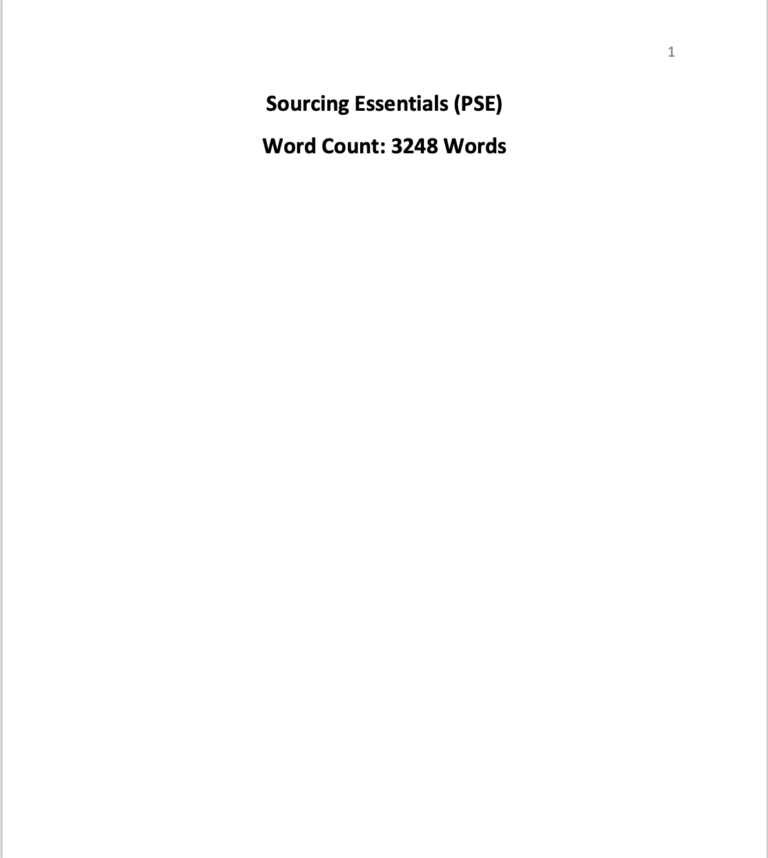Description
Solution
The use of primary data entail using the first-hand data obtained by a researcher directly. This is different from secondary data which is a form of desk research obtained from the readily existing sources (Cerar et al., 2021; Silevew, 2019).
Considering this research, primary and secondary data was referred to. The rationale of this is that primary data is appropriate as it facilitate use of survey and observations while qualitative primary data being obtained by use of focus groups, interviews and observations. The secondary data is conversely important to source the available literature and apply it to support primary data obtained through the application of interviews and questionnaires.
Additionally, considering this research, through the application of Almarai entity, primary and secondary sources which are qualitative (textual) and quantitative (statistical) were obtained. Additionally, through the application of stay interviews in Almarai, this entail a form of secondary data sourced. Therefore, application of primary and secondary data to analyse turnover scope lead to possibility of managing issues with one strategy by using the strength of the other.
The decision of using either primary or secondary data is dependent on existence and detailed nature of the data. In an event the secondary data is not available/insufficient, sourcing of primary data is identified as essential to answer the research questions. Also, data, whether primary or secondary could either be qualitative (textual) or quantitative (statistical). The quantitative primary data can be sourced by use of surveys or observations, with qualitative primary data being sourced by use of interviews, focus discussions and observations (Silevew, 2019). Taking into account of this research, data is sourced by use of data from qualitative (semi-structured interviews) and quantitative (survey by use of questionnaire) data from the primary sources by use of case study design. The data sourcing is data in a sequential manner from the interviews and later using surveys.
Related Papers
(Solution) CIPS Organisation Corporate Strategy Influence and Impact for Corporate, Business and Functional Structures
(Solution) CIPS Sourcing Essentials Assessment
- In this assessment, sourcing approaches have been identified and holistically reviewed. This is in line with RCU organisation IT spend category. This is further compared with payment services, document management category which is office suppliers and postal services.
- For evaluating the identified spend categories, various tools have been selected which are Kraljic Analysis Tool, Mendelow’s Analysis Tool for Stakeholder analysis and the Maslow Hierarchy of needs.
- Further, by using the SWOT analysis, the internal and external factors of the sourcing have been selected. A further analysis by use of Peter Block Grid’s has been applied to evaluate the interests of stakeholders to source appropriate position.
- The findings indicate that RCU adopts the best sourcing approach based on their needs.
- Finally, by using Carter’s 10Cs model, the best practice for pursuing suppliers appraisal has been provided for IT spend category.
(Solution) CIPS Advanced Level Advanced Practitioner Corporate Award (APDP)
- In summary, this assessment, has focused on evaluating the process of leading a project team for implementing a new category management.
- For achieving this, British American Tobacco (BAT) in Malaysia has been used as an organisation of interest.
- The selected category of spend is technology and particularly the procurement of high speed machines for meeting the market demand. The rationale of this is that as an international organisation, BAT organisation engages both local and international suppliers in sourcing of technology.
- Considering this high demand, there has been challenges which sustainability of their sourcing approach. Therefore, BAT has been prompted to invest in a system which is modernised for ensuring modernisation of the procurement and supply process in BAT.
- For the Procurement and Supply Management (PS&M) tasked with the responsibility of procuring the technology system tend to take part in learning and development strategies, improving the suppliers relations, increasing alternation of the suppliers relations, high-level inclusion of stakeholders and to transform technology.



